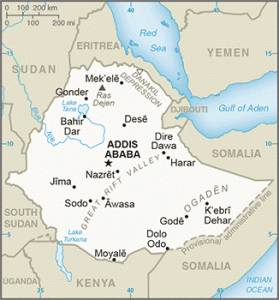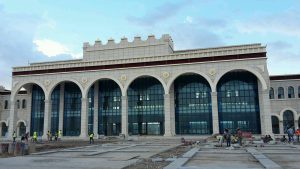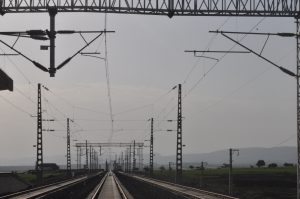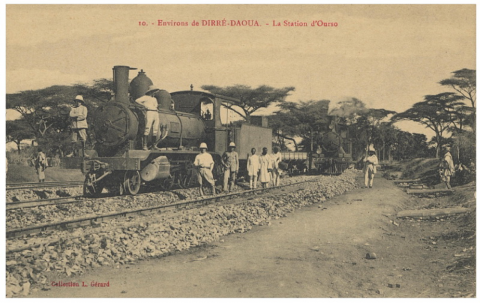The Ethiopia-Djibouti railway has been compared by residents of of Dire Dawa to the Nile in Egypt—like the Nile, the train was a trading route, a mode of connection, a source of livelihood, a resource. Just as cities can be born based on natural geography, at the mouths of rivers and at ports, infrastructure creates new focal points in the built environment for urban life to develop and flourish. The railway infrastructure altered the geography of the region and provided a connective route across another man-made creation—the border between Ethiopia and Djibouti.

When the train first pulled into the station on December 23 in 1902, the city of Dire Dawa was little more than a small village along a river in the floodplains of eastern Ethiopia, near the border of Djibouti. Originally, the railroad was planned to pass through the hilly, much more significant, city of Harar, but when the railroad faced economic difficulties and engineering challenges, it became clear that laying tracks through the mountains would be too costly. Instead, the tracks of the railway were built through the plains below, passing by the small village. The city of Dire Dawa was born. As the train began service between Addis Ababa, the capital city of Ethiopia, and Djibouti’s capital, Djibouti City, the city of Dire Dawa became a crucial point along the route. Expanding into the second most populous city in Ethiopia, Dire Dawa grew into a prosperous trading city and the central location for the workshops of the railway company.

Because Dire Dawa was born as a city along the railway line, much of the urban economy was based on access to the railroad. As the largest city closest to the border of Djibouti, Dire Dawa was ideally situated as a point where contraband traders—mostly women—could traffic cheap goods by train across the border of Ethiopia and Djibouti. Skirting the burden of taxes, cheap goods from Djibouti included clothing, sugar, and grain. Goods on the way to Djibouti were often agricultural products from the region. With the railroad providing employment for much of the population of Dire Dawa, residents of Dire Dawa tell of a “Golden Age”—about thirty years ago—when anyone who looked for work could find some, and the city was rich and expanding from both official and unofficial trade.
Because most of the city’s residents relied on the railroad as a source of wealth and employment, many people had emotional attachments to the old railway. Many of the workers at the railway company in Dire Dawa proudly point out that the Ethio-Djibouti railway has been operating for more than one hundred years. Yet over the past twenty years, the railway has experienced significant decline due to aging equipment and low funding for maintenance. As the railway has declined and train service has reduced, the city of Dire Dawa has declined too. According to residents, life is more difficult now, the population has decreased, and the economy has collapsed. Many people pointed to the homeless, unemployed people on the streets, claiming that that population didn’t exist twenty years ago. Just as the railway’s birth was linked to the city’s growth, the decline of the railway signaled the shrinking of the city. As the railway made Dire Dawa, so it could unmake the city.

However, this is not the end of Dire Dawa. There is a new train, built by two Chinese state-owned companies which has just finished construction. This new railway runs almost parallel to the old railway, promising new hope for economic growth and industry. Passing through on the edge of town, the new railway stops at a large extravagant train station neighbored by a new industrial park which bodes well for increased industrial investment. Land values in the surrounding areas are going up as people scramble to buy land in this promising area of the city. “The new Dire Dawa will be there,” predicted one official of the Dire Dawa city government. Just as the old train inspired growth and trade for residents of Dire Dawa, this train offers the potential for new kinds of economic opportunities. As an important stop on the new railway line, the city of Dire Dawa appears as though it will rise again.
This blogpost is based on summer research in Ethiopia and Djibouti in June-August 2017 with support from Gallatin Africa House Fellowship and the Dean’s Award for Summer Research.

